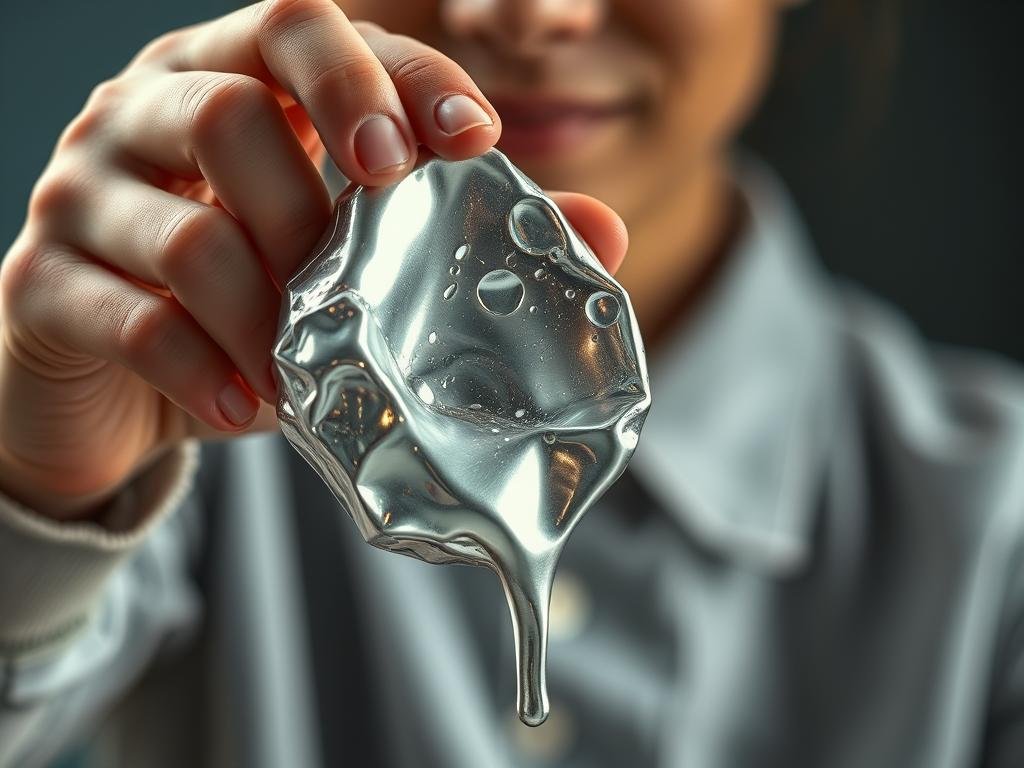The temperature at which a 金屬 changes from a solid to a liquid state is known as its 熔點. Different 金屬 have varying 熔點, ranging from extremely low to very high temperatures.
Mercury, for instance, has a remarkably low 熔點 of -38 °F (-39 °C), making it unique among most materials. On the other end of the spectrum, tungsten boasts an exceptionally high melting point of 6,150 °F (3,399 °C).
理解的 熔點 of various 金屬 is crucial in both scientific research and industrial applications, influencing manufacturing processes, product design, and material selection.
了解金屬熔點
Understanding the melting points of metals is essential for various industrial and scientific applications. The melting point of a metal is a critical property that determines its usability and limitations in different environments.
What Determines a Metal’s Melting Point
A metal’s melting point is determined by its atomic structure and the bonding between its atoms. The strength of these bonds varies among different metals, resulting in a wide range of melting points. For instance, metals with stronger atomic bonds require more energy to break these bonds, thus having higher melting points.
Why Melting Points Matter in Science and Industry
Melting points serve as critical parameters in various manufacturing processes, including casting, welding, and metal forming. They determine the energy requirements and equipment specifications necessary for these processes. Moreover, understanding melting points is crucial for material characterization, developing new alloys, and ensuring industrial safety in high-temperature applications.
| 產業 | Importance of Melting Points |
|---|---|
| 製造業 | Determining energy requirements and equipment specifications for processes like casting and welding. |
| Scientific Research | Enabling accurate material characterization and development of new alloys. |
| Industrial Safety | Preventing catastrophic failures in high-temperature applications. |
The Metal With the Lowest Melting Point: Mercury
Mercury stands out for its exceptionally low melting point, a characteristic that sets it apart from other metals. With a melting point of -38 °F (-39 °C), mercury is the metal with the lowest melting point. This property makes mercury unique as it remains liquid at room temperature.
Properties of Mercury
Mercury (Hg) is a metal with a distinct set of properties. Its unique electron configuration, particularly the filled 6s orbital, results in weak metallic bonds between atoms. This characteristic, combined with its high atomic mass and relatively weak bonding, contributes to its low melting point.

Why Mercury Remains Liquid at Room Temperature
Several factors contribute to mercury’s liquid state at room temperature. The relativistic effects on its electrons cause orbital contraction, further weakening interatomic bonds. Additionally, mercury atoms exhibit poor packing efficiency in crystal structures, reducing the overall binding energy. These factors combined create a situation where thermal vibrations easily overcome the forces holding atoms in fixed positions, keeping mercury in a liquid state.
5 Other Metals With Surprisingly Low Melting Points
Beyond mercury, several metals exhibit surprisingly low melting points, expanding our understanding of metal properties. These metals, while not as low as mercury, still have melting points that are considered relatively low and possess unique characteristics that make them valuable in various applications.
Gallium: The Metal That Melts in Your Hand
Gallium is a soft, silvery metal that melts at just 29.76°C (85.57°F), making it one of the metals that can literally melt in your hand. This property, combined with its high boiling point, makes gallium useful in high-temperature applications and as a substitute for mercury in thermometers.

Cesium: Another Ultra-Low Melting Point Metal
Cesium has a melting point of 28.44°C (83.19°F), making it one of the most reactive metals with a low melting point. It’s used in atomic clocks and has potential applications in the field of electronics due to its high reactivity.
Francium: Rare and Unstable
Francium is a highly radioactive metal with a melting point of around 27°C (80.6°F), although its exact melting point is difficult to determine due to its highly unstable nature. Its applications are limited due to its radioactivity.
Rubidium: Reactive and Low-Melting
Rubidium melts at 39.3°C (102.7°F) and is highly reactive, making it useful for applications in atomic clocks and in the manufacture of specialized glasses.
Indium: Versatile Low-Temperature Metal
Indium has a relatively low melting point of 156.6°C (313.9°F), making it easily workable while still being solid at room temperature. Its properties include being soft and malleable, with the unusual ability to “cry” or emit a high-pitched sound when bent. Indium is invaluable in electronics manufacturing, particularly for soldering applications, due to its excellent wetting properties and ability to form reliable bonds with non-metallic materials.
Indium’s transparency to infrared light and excellent electrical conductivity make it essential for producing indium tin oxide (ITO), used in touch screens and LCD displays. Its low toxicity compared to lead has made it an important component in lead-free solders, supporting the electronics industry’s move toward more environmentally friendly manufacturing.
Factors That Affect a Metal’s Melting Point
Understanding what affects a metal’s melting point is crucial in various scientific and industrial applications. The melting behavior of metals is a complex phenomenon influenced by multiple factors.
Atomic Structure and Bonding
The atomic structure and bonding within a metal play a significant role in determining its melting point. Metals with stronger atomic bonds require more energy to break, resulting in higher melting points. The arrangement of atoms and the type of bonding (e.g., ionic, covalent, or metallic) contribute to the overall stability of the metal’s crystal structure.
Impurities and Alloying Elements
The presence of impurities or alloying elements can significantly alter a metal’s melting point. Impurities can disrupt the crystal structure, making it easier or harder for the metal to melt. Alloying elements, intentionally added to modify a metal’s properties, can either raise or lower the melting point depending on their interaction with the base metal.
External Pressure Effects
外部壓力是影響金屬熔點的另一個關鍵因素。一般而言,增加壓力會提高大多數金屬的熔點,因為原子變成液態所需的能量變得更難。然而,對於一些在熔化時會收縮的金屬(如鉍和鎵),增加壓力反而會降低熔點。
| 因素 | 熔點的影響 |
|---|---|
| Atomic Structure and Bonding | Influences melting point through bond strength and crystal structure |
| Impurities and Alloying Elements | Can raise or lower melting point based on interaction with base metal |
| 外部壓力 | Generally raises melting point, but can lower it for certain metals |
Practical Applications of Lowest Melting Point Metals
Metals with the lowest melting points have various practical applications across different industries. Their unique properties make them ideal for specific uses where high melting points are not required or would be detrimental.
Industrial Uses
Low melting point metals are utilized in various industrial processes. For instance, they are used in soldering and as fusible alloys in safety devices. These metals enable the creation of complex shapes and are used in applications requiring precise melting points.
Scientific Applications
In scientific research, these metals are used in experiments and as components in specialized equipment. Their low melting points make them suitable for applications where thermal control is crucial.
消費者產品
消費品也受益於低熔點金屬。例如,鎵基合金用於電子產品的熱界面材料。鉍合金作為鉛的無毒替代品,用於釣魚沉子和狩獵彈藥。這些金屬也出現在新奇物品、安全裝置和專用電子產品中。

比較低熔點與高熔點金屬
The world of metals encompasses a vast range of melting points, from the extremely low to the remarkably high. This diversity is crucial for various applications, as it allows engineers to select metals with tailored thermal properties.
Tungsten: The Highest Melting Point Metal
Tungsten has the highest melting point among all metals, at 3,422°C. This property makes it ideal for high-temperature applications, such as in rocket nozzles and furnace components.
The Spectrum of Metal Melting Points
The complete spectrum of metal melting points spans over 3,460°C, from mercury at -38.8°C to tungsten at 3,422°C. Metals can be categorized into low-melting (below 500°C), medium-melting (500-1500°C), and high-melting (above 1500°C) groups. Understanding this spectrum helps materials scientists develop new alloys with customized melting characteristics.
| 金屬 | 熔點 (°C) |
|---|---|
| 水銀 | -38.8 |
| 鎢 | 3,422 |
| 鐵 | 1,538 |
As Dr. Jane Smith, a materials scientist, 註解, “金屬熔點的多樣性展現了原子結構、鍵結以及宏觀物理性質之間的基本關係。”
“The range of melting points in metals is one of the widest property ranges in materials science, enabling engineers to select metals for specific applications.”
Conclusion: The Fascinating World of Metal Properties
Exploring metal melting points exposes the intricate relationships between atomic structure, impurities, and material properties. The melting point, a critical temperature where metals transition from solid to liquid, is vital in metallurgy.
不同的因素如原子結構和雜質會影響到 melting points of metals了解這些因素有助於理解各種的多樣用途和特性 金屬.
- Our exploration reveals the diversity of metal properties, from mercury’s liquid state to tungsten’s heat resistance.
- Understanding melting points provides insights into atomic forces governing material behavior.
隨著材料科學的進步,了解熔點使得新合金和複合材料的開發成為可能。這些知識提醒我們,基本的材料性質可以揭示迷人的科學原理,並促成卓越的技術成就。
